Interview by ELISABETTA PORCINAI and ANDREA QUARANTOTTO
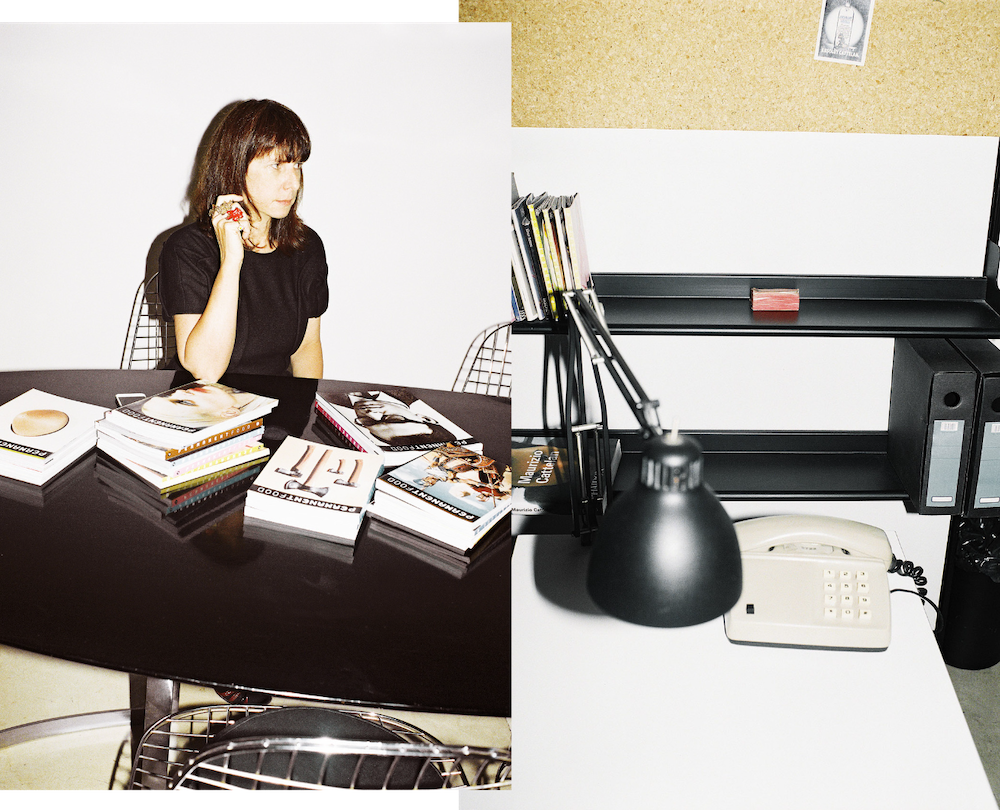
How is an image born? We asked Paola Manfrin, Independent Creative Director, or better, ‘Image Engineer’. Images are Paola’s chosen language, her obsession, her DNA. It all begins with observation: her eyes relentlessly sounding out the world, ready to steal and manipulate everything her visual radar detects. All her life, Paola has been walking a thin line between art and communication, never claiming to be an artist, yet knowing all of art’s inner workings.
We got to her through the backdoor of Permanent Food, an editorial project ahead of its time created in partnership with Maurizio Cattelan between the end of the 90’s and the beginning of the 2000s. At once a magazine and the negation thereof, Permanent Food is a cannibal periodical, feeding on the torn pages of other magazines, re-assembled to form purely-visual binary sequences. Evocative, provocative, disturbing, exhilarating – the game of free association reaching artistic sublimation.
Our conversation reveals an all-round creative mind that no longer needs words to express herself. A journey through art and communication that began with printed matter and continued to morph thereafter, in unison with those media which at once shaped it and provided a stage for it. Through Paola’s words, we rewind the visual reel of the past 30 years, tracing back some of the most significant technological and digital milestones of our century: from smartphones to NFTs. Fast forward to our day, Permanent Food never fails to reaffirm its contemporary relevance – a simple yet groundbreaking concept that turned visual communication into art.
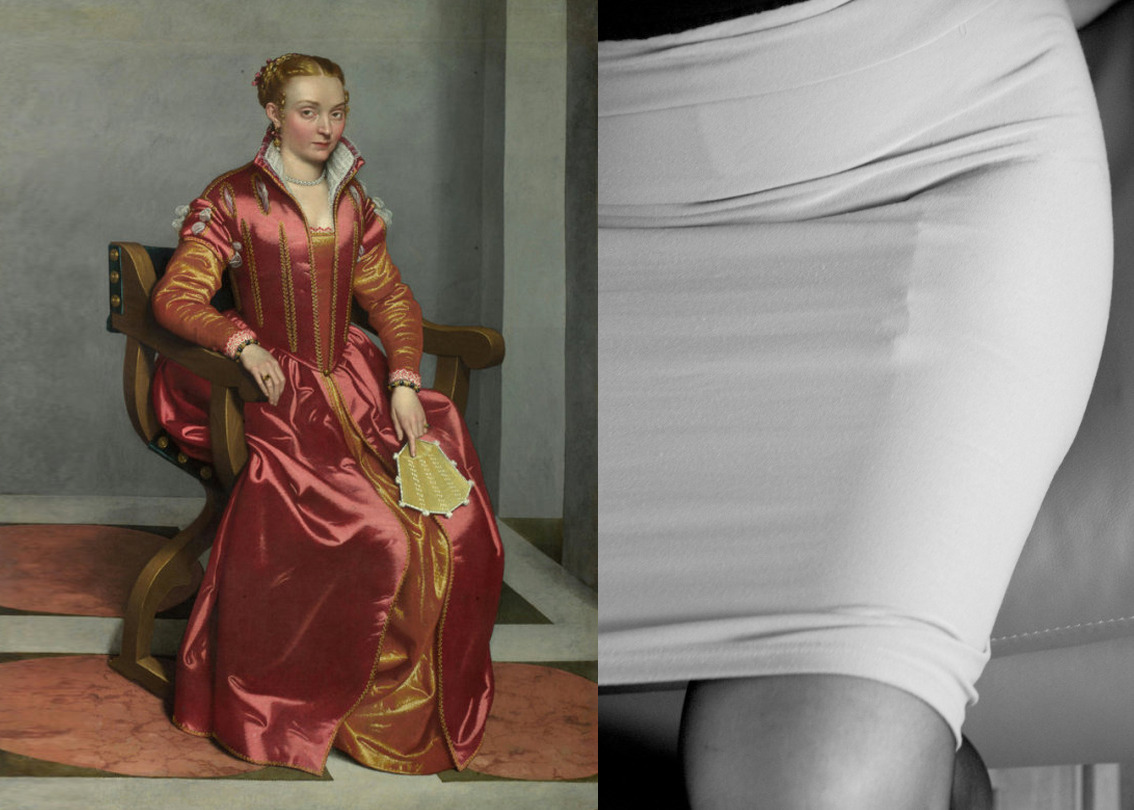
ELISABETTA P. — Hi Paola, let’s get straight to the point. Tell us about Permanent Food: how did the project evolve over time? What was your role?
PAOLA M. — Permanent Food is a cannibal magazine, born as a fanzine with Dominique Gonzalez-Foerster and Maurizio Cattelan and later morphing into a different concept as I stepped into the game. In the first issue, which also includes one of my artworks, contributors were asked to reinterpret existing images. It featured some of the greatest artists of the time, the likes of Takashi Murakami, Liam Gillick, Angela Bulloch, Noritoshi Hirakawa, Carsten Höller, Piotr Uklanski and Wolfgang Tillmans. From a formal point of view, I believe my images differentiate themselves from the others featured in that issue for their visual language, which was already more clearly akin to that of fashion and communication, rather than art. From the second issue onwards, Dominique went on to take other paths, so I took over and radically changed the magazine’s editorial concept. From then on, Maurizio and I would simply select, reassemble and edit pages we tore out of other publications. Each issue implied a huge amount of work – it was a strenuous process. From a communication perspective, the first idea was perhaps stronger, more unique, because artists were actively reinterpreting existing images, but Maurizio insisted that we changed it. Maybe he’s always been right about it, who knows…
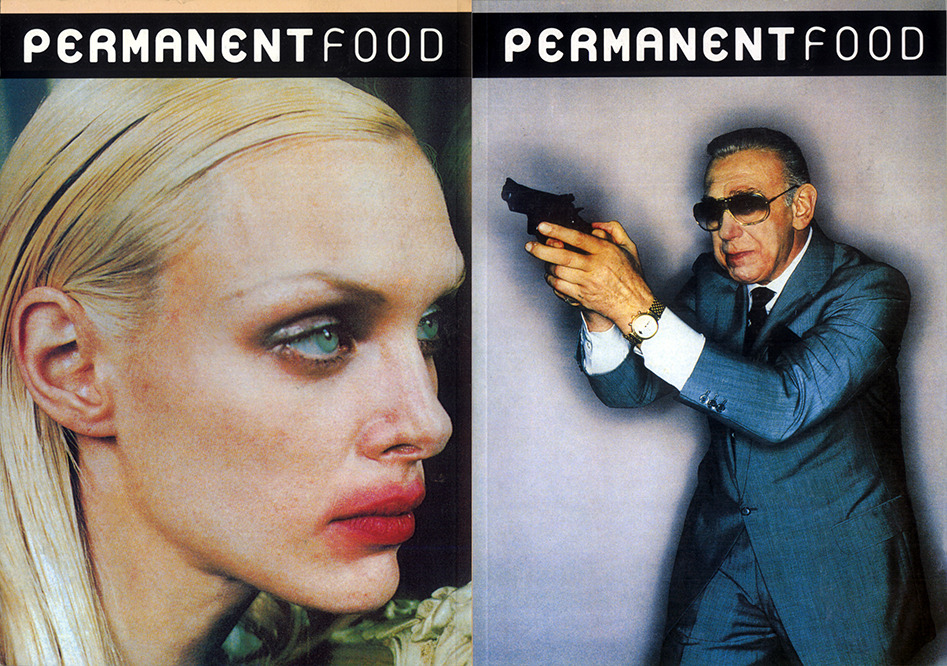
ELISABETTA P. — Let’s take a step back. How did it all begin?
PAOLA M. — One day, coming out of an exhibition, I met Maurizio Cattelan. He just stood there, holding an ugly flyer of an exhibition of his. Suddenly, he came up to me and asked:
– ‘What do you think about it?’
– ‘Well, that looks pretty bad!’, I answered, plainly.
– ‘How would you do it?’, he asked me.
– ‘Well, let’s just do it. Shall we?’ was my answer.
And from that brief yet blunt chat our friendship and collaboration began. Our intentions were perhaps a little cynical at the start: Maurizio wanted to ‘use’ me, but in the positive sense of the word. Gossip had it that he was hanging out with a publicist and a curator. People thought he was doing commercial compromises, but in fact he was just making art, plain and simple. I’ve never told him what to do, ever. Our collaboration was purely based on inspiration.
In those years, I was working for McCann-Erickson and had a great space at my disposal. Maurizio soon set up base there. We had computers, internet, a budget for purchasing magazines and books. The place was brimming with creative talents. We leafed through and ripped off pages, always coquetting with our own intellectual nonsense. Massimiliano Gioni often came by – we were always together. It was amazing! It was like our very own Factory, and it is in that very space that we assembled the first issues of Permanent Food. There’s a piece by Maurizio dating back to that period (2001) which is the exact scaled copy of my office – a clear sign that he had become one with that place.
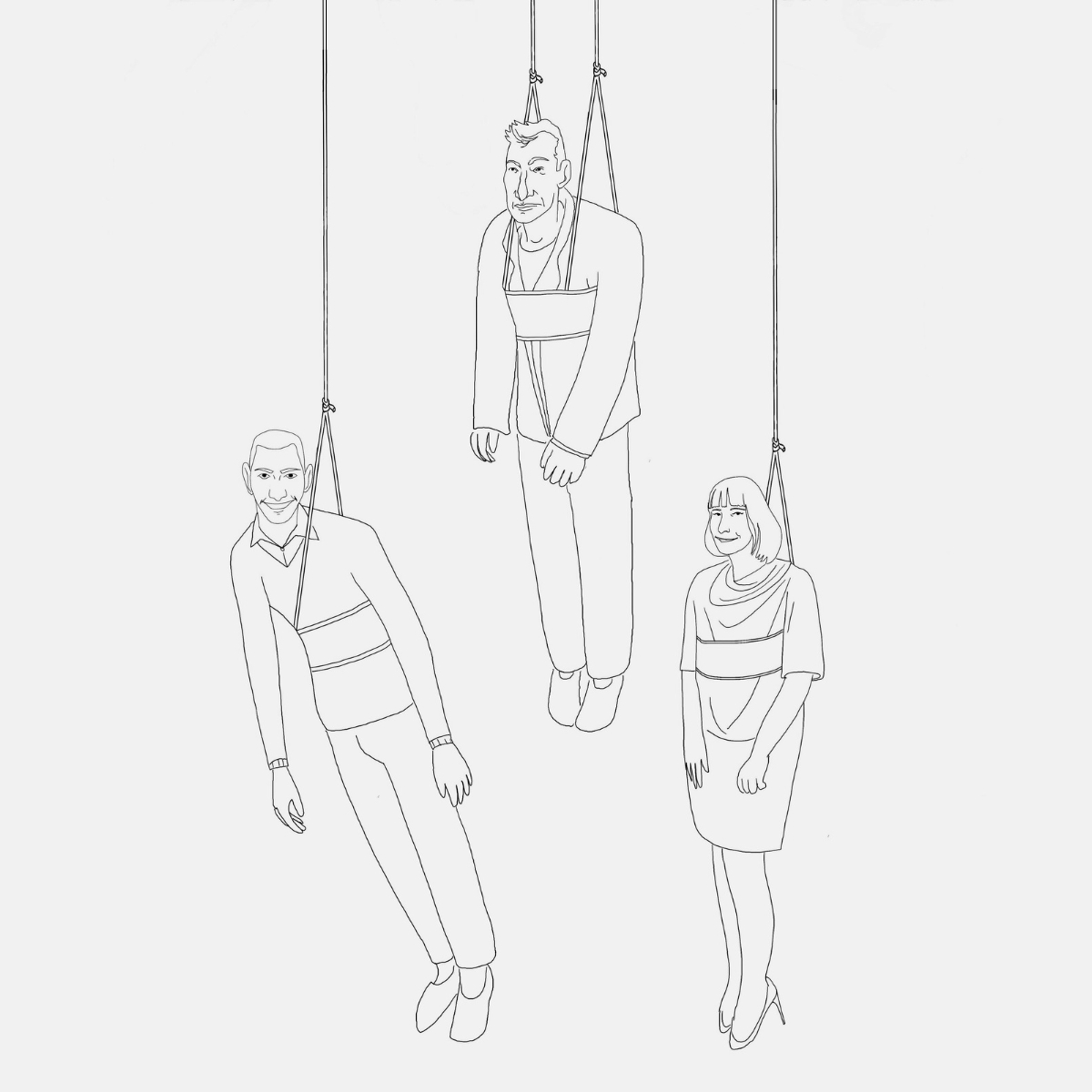
ELISABETTA P. — Your email signature reads: ‘Independent Creative Director’. Can you tell us what you do?
PAOLA M. — Sure. Well, the term ‘Independent’ is quite self-explanatory, while that of ‘Creative Director’ has been my role for a lifetime. ‘Image Engineer’ is perhaps the expression that best defines me. It was tailored for me by Cino Zucchi, a very talented Italian architect. I don’t write it in my email signature as it might sound presumptuous or a joke, but I like it, because it’s true: I engineer images. My work consists in applying creative thought to anything: from the visual identity of a fashion brand to more sophisticated concepts for artists, architects, or thinkers in general. I’m also very generous when it comes to sharing my ideas, simply because it is the best way of spending my time. As I always say: ‘Still better than working!’
ANDREA Q. — What is the first memory that comes to mind with regard to your visual talent?
PAOLA M. — My imagination as a child, I would say. Besides my sense for aesthetics, which is clearly the result of the creative context I grew up in. I can recall my incredible ability to make up stories – both in my dreams and in reality. All I needed were a couple of matches or LEGO bricks. Toys were much more stimulating back in the days. I believe that games like LEGO or Meccano share the merit of having shaped some of the greatest creative minds in the world, simply because they lent themselves to infinite applications, thus opening one’s mind creatively.
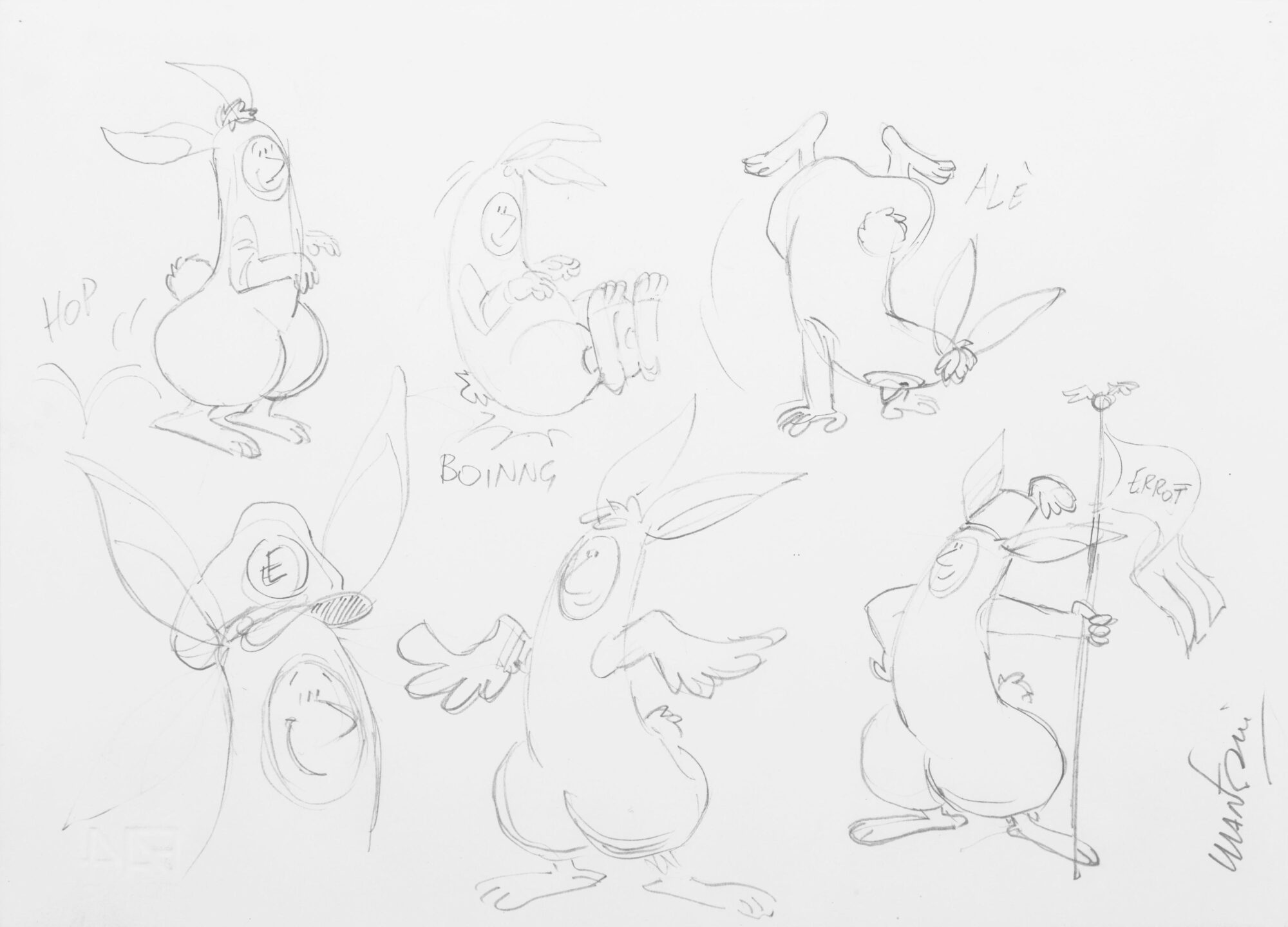
ELISABETTA P. — How did your passion evolve over time? How did you define yourself artistically and professionally?
PAOLA M. — As I mentioned earlier, I grew up in a creative environment: my home was a meeting place for famous artists and cartoonists of the time – pure culture. My father was Umberto Manfrin, co-author together with Giorgio Rebuffi and Roberto Renzi, of the Italian comic series ‘Tiramolla’. He also made many of the preparatory drawings for Maurizio Cattelan’s works. All that surely had an influence on my creative upbringing. My career kind of started out by chance: one day, as I was modelling for an advertising shooting, I decided to step forward and talk to the project’s Creative Director. And that’s how my pathway in the world of communication and advertising began, first as a Creative Director at McCann-Erickson, then at Armando Testa, and now independently.
ANDREA Q. — What do you and Maurizio Cattelan have in common?
PAOLA M. — Images, our obsession with images. I don’t know where to put them anymore, I have hundreds of thousands of them! I use them for everything: for Interview Match – my online editorial project – for creating my campaigns, for communicating. My life is pervaded by images and I’m in a constant state of alert, ready to detect new ones – which is perhaps why I always remember where I’ve seen something. I now recall, for instance, a funny episode related to Permanent Food, namely when Maurizio was caught in the act of tearing pages out of books and magazines in a New York bookstore, where he of course couldn’t set foot for a year thereafter!
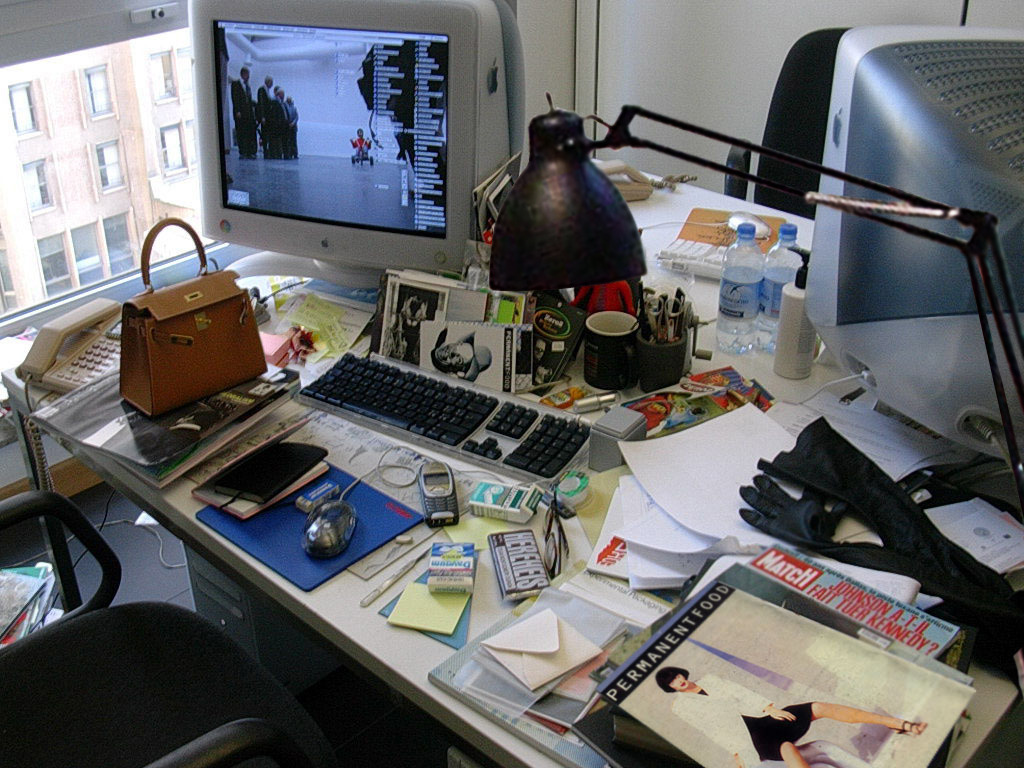
ELISABETTA P. — Your life appears as a balancing act between art e advertising. Which one of the two, in your opinion, takes advantage of the other?
PAOLA M. — The truth is that, in this time in history, there’s no longer any difference between prey and predator: it is not clear who is taking advantage of whom. Advertising no longer exerts the influence it did prior to the advent of social media, which completely revolutionised its language and dynamics. Certainly, through the legitimisation of museums, critics, and collectors, art has maintained its own, distinct integrity. At the same time, social media, and more recently NFTs, have engendered a whole new, autonomous legitimation system, whereby previously unknown talents have managed to bypass the institutional circuits of art and gained an ‘artist status’ purely based on the consensus earned on social media channels. NFTs are perhaps the most striking evolution of this phenomenon, with artists reaching staggering quotations on a market that moves in parallel with that of the so-called ‘official art’ of the 2020s. An upheaval in the art market that has unfolded in the span of barely two years – there is not even a decade between these two realities.
The same goes for advertising. Brands now communicate through different outlets: there are podcasts, Instagram and other social media platforms… and, let’s face it, whether we like it or not, now there are influencers: figures that did not exist in the past century. The press, intended as billboards or printed ads, is now struggling to reclaim the authority it once enjoyed. The same holds true for TV commercials, which are now being replaced by more pervasive media platforms, such as YouTube. Back in the days, brands would hire contemporary artists to create advertising campaigns, now such a thing would be unthinkable, and even ridiculous. Figures like Alessandro Michele skilfully source references from the world of art, design or photography and make them theirs in an authorial way as part of their brand communication.
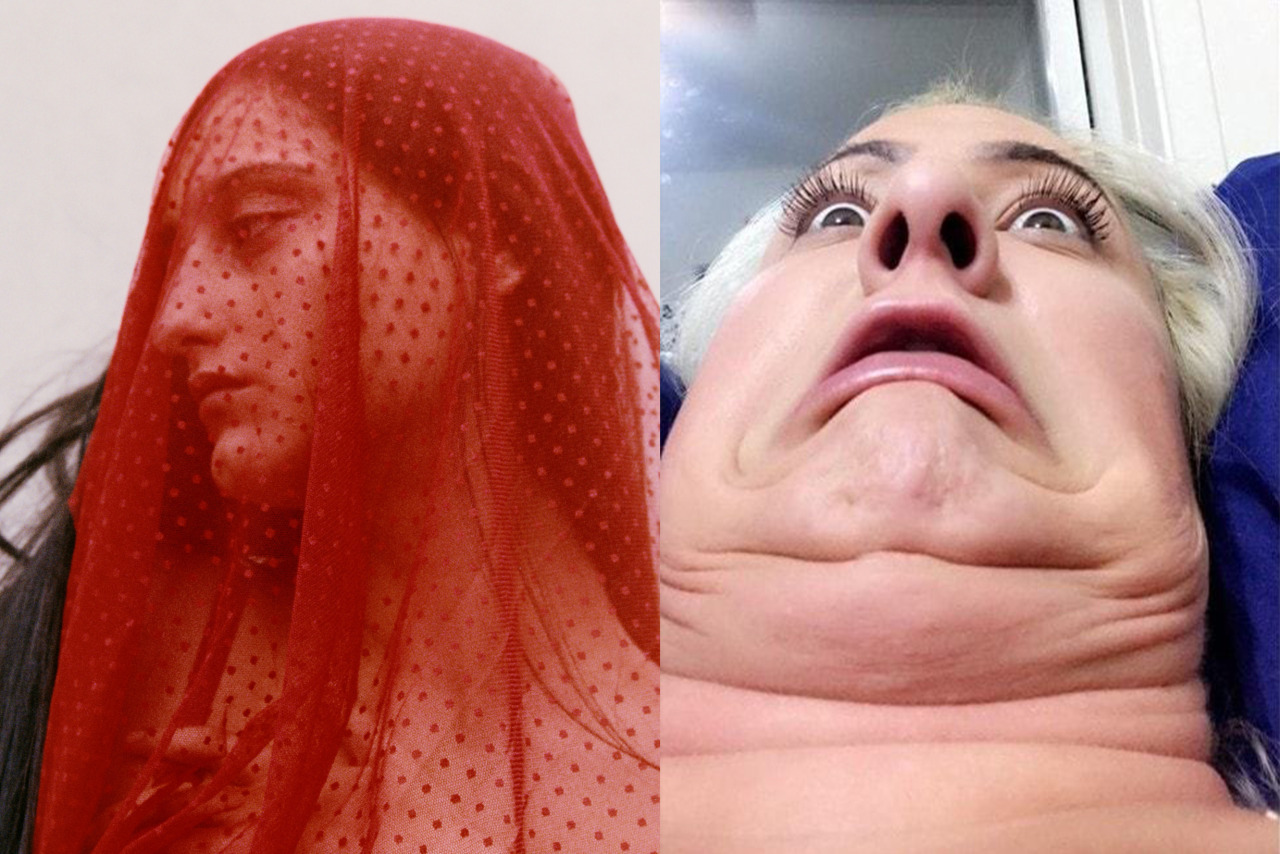
ELISABETTA P. — Yes, everything has become more ambiguous, or rather flatter…
PAOLA M. — No, I don’t see that as a flattening process, but simply as an evolution: it is the contemporary turn of communication, which should never be mistaken for art tout court. The cross-pollination of visual references has become so widespread that it is almost impossible to define the boundaries of appropriation.
ELISABETTA P. — How have social media influenced the contemporary visual language, in your opinion?
PAOLA M. — Social media have radically changed visual communication: people have become familiar with images and use them in a much more conscious way to present themselves and their work. This also applies to artists and the way they showcase their work. That said, there are still ‘purists’ who don’t know a thing about social media and stubbornly refuse to use them.
ANDREA Q. — Even Maurizio Cattelan had set up an Instagram account at some point…
PAOLA M. — Yes, but even in that case, Maurizio gave proof of his artistic ability: on his account he would post an image, which he then systematically deleted. Then he got tired of it and moved on. Nevertheless, he came up with an innovative way of using that medium.
Instagram is now a catalyst for brand communication – I deal with it daily in my work, so I’m quite familiar with its dynamics. Lately, people are beginning to consider the idea of using it as a platform for specific projects, instead of posting something every day, which after all is just an empty pursuit.
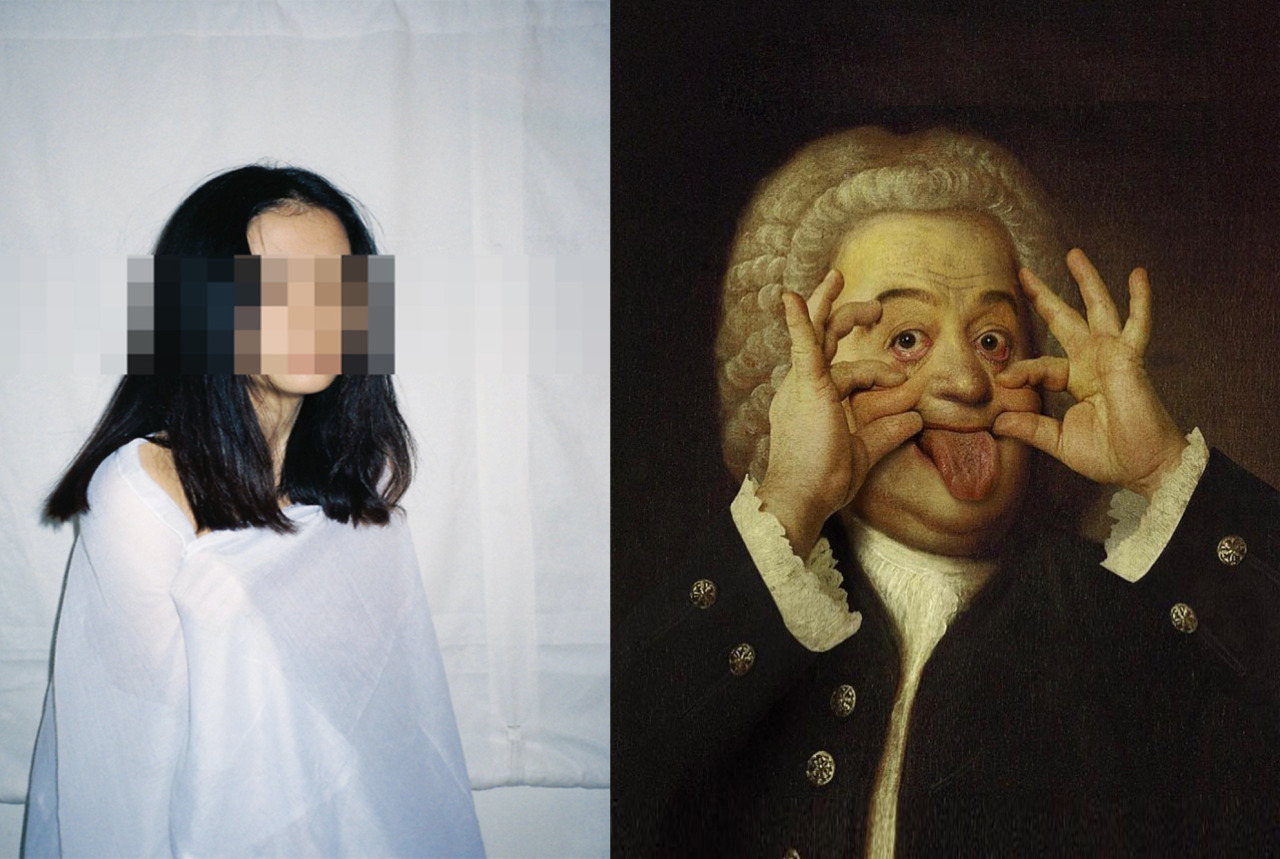
ELISABETTA P. — Let’s get back to Permanent Food for a moment. Browsing through it, it appears as a collection of fragments of a moment in time. The binary relations upon which it is built end up transfiguring the meaning of each image, removing it from its original context. What was the logic behind your associative method?
PAOLA M. – Ours was a consequential operation: our material collection took place over a span of 6 months, based on publications issued in that same period. Each issue reflected hence the historical context it was created in. And that is exactly where later imitators have been failing: their contents are substantially all the same, there is no contextual screening of history, they are not contemporary.
We decided to put an end to the project for two reasons: first of all, its life cycle was over, and secondly because we started having copyright issues. This is why I later moved on to Interview Match and Maurizio to Toilet Paper, now he’s the author of the images he publishes, together with Pierpaolo Ferrari, and that is a winning factor.
On July 10, 2013 – 5 years after the last printed issue – we decided to put Permanent Food online using Tumblr. There we can at least avoid the problems related to copyright: on the internet you can ‘steal’ without getting hurt. The core idea is still the same though: creating associations using images from the web, or rephotographing the pages of our old printed issues. In short, we try to stay true to the original concept and mirror the contemporary historical context through what is published on the web.
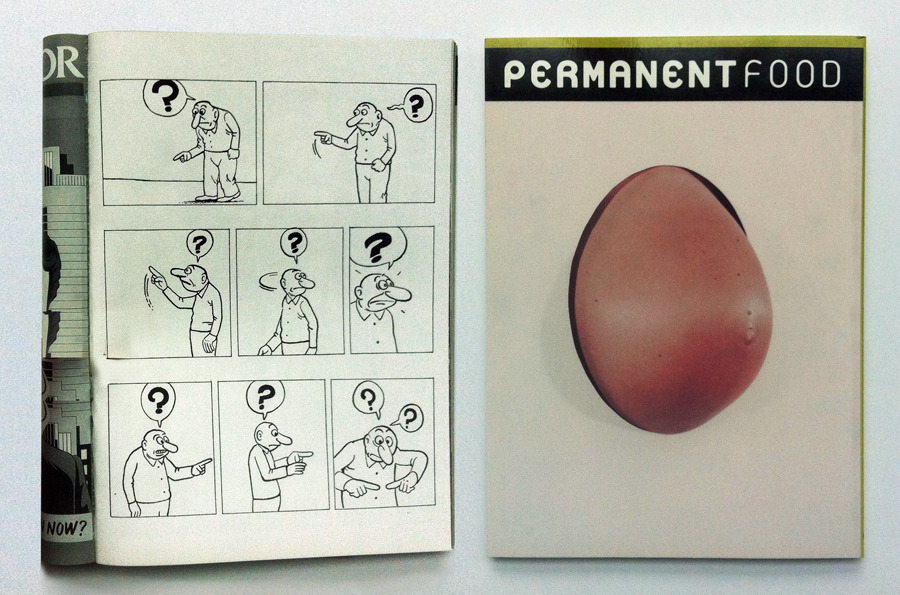
ELISABETTA P. — Speaking of the web, can you tell us what your image research process looked like at that time? We are specifically referring to the period between the end of the 90s and the beginning of the 2000s: the Internet already existed, but was still in its infancy. How did digital and analogue integrate in your work?
PAOLA M. — First of all, we did extensive research on print media. In addition, before smartphones became available, I always carried around a small-format camera. In the streets, in movie theatres: I took photos everywhere and all the time, and that was also a source of image-material for Permanent Food. I remember when the first models of cellphone with integrated camera appeared in the early 2000s. The image quality was still very poor though, and I just couldn’t wait for someone to invent a phone that took photos as good as a real camera. To me, it was also a matter of looks: I loved small handbags, but they couldn’t possibly fit both a camera and my cellphone. I believe many people had the same intuition, and when the first smartphones hit the market, I just couldn’t believe it: finally, I could take photos with my phone! Today I’m very active on Instagram also because I love to create impromptu photo or video content.
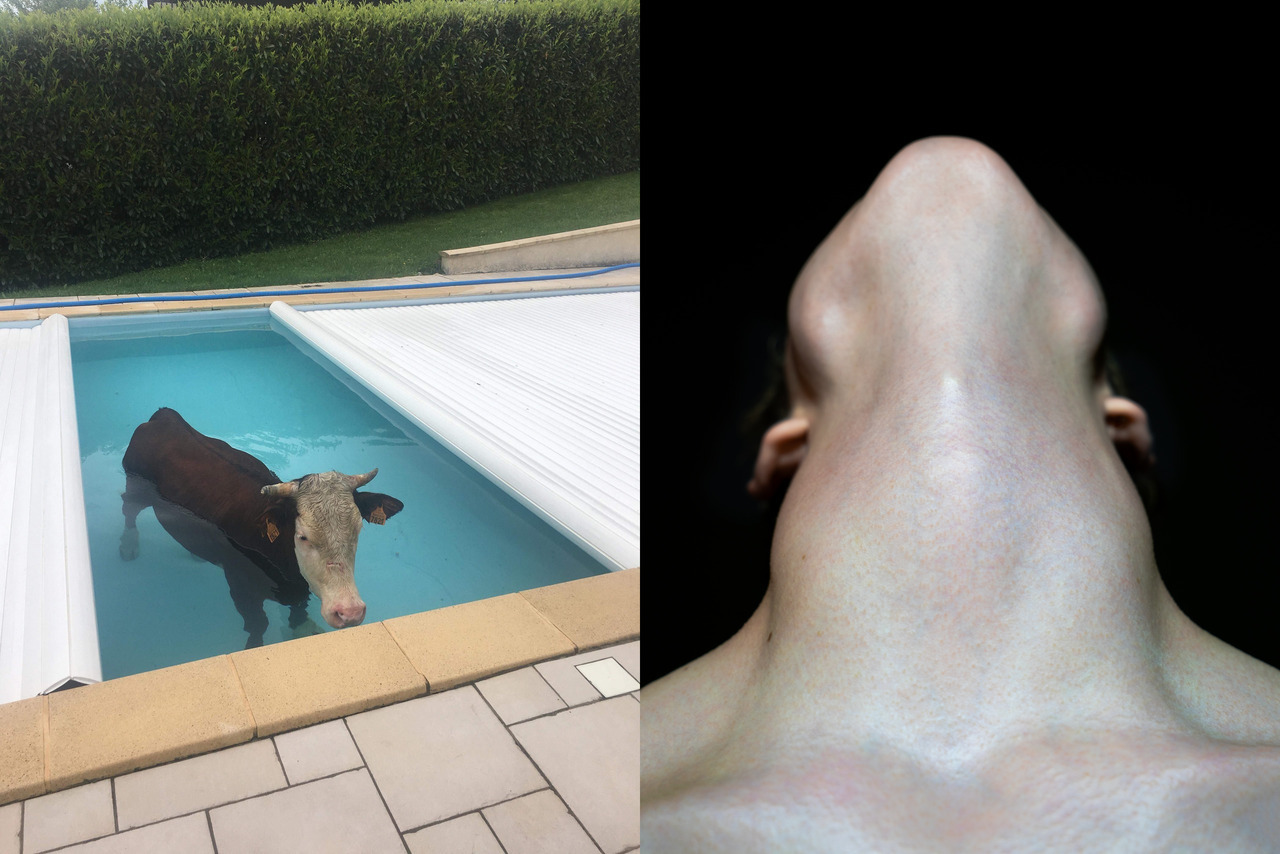
ANDREA Q. — Did you also shoot on film?
PAOLA M. — No. I’ve always loved immediacy, so I used digital cameras or, if anything, I shot Polaroids. For the same reason I’m not very fond of video editing and montage. After all, I could do what I do also with moving images, but I loathe the editing process, it bores me.
I even attended a cinema school in New York City. It was there that I realised how much I enjoyed directing, but also how much I hated editing. Cinema is an extraordinary creative and narrative means, but it requires a degree of perseverance that not all are capable of. Of course, in my work I also deal with video, but I just give my creative input to professionals who know how to use this medium in a convincing way.
Nowadays, creative talents are required to master an impressive range of skills – skills that once used to be at the core of different professional roles: there would be an Art Director, an editor, a director, an illustrator, a photographer, and so on. Now, many of these functions have merged into one. Over the years, I’ve managed to keep pace with this generational shift, but I guess this is also due to my relentless curiosity.
ELISABETTA P. — Can we then think of Permanent Food as of a sort of proto-internet?
PAOLA M. — I’ll reply with an anecdote. One day, someone emailed us a PDF version of the magazine compiled with images sourced from the web. Maurizio and I looked at each other and said: ‘It’s over.’ In a way, that person was a precursor, too.
ANDREA Q. — Indeed, it is hard to tell the difference between the two.
PAOLA M. —Yes, the taste and tone of voice are the same. Maurizio was ecstatic: he’s always happy when someone tries to copy him. Picasso docet: ‘Good artists copy, great artists steal’.
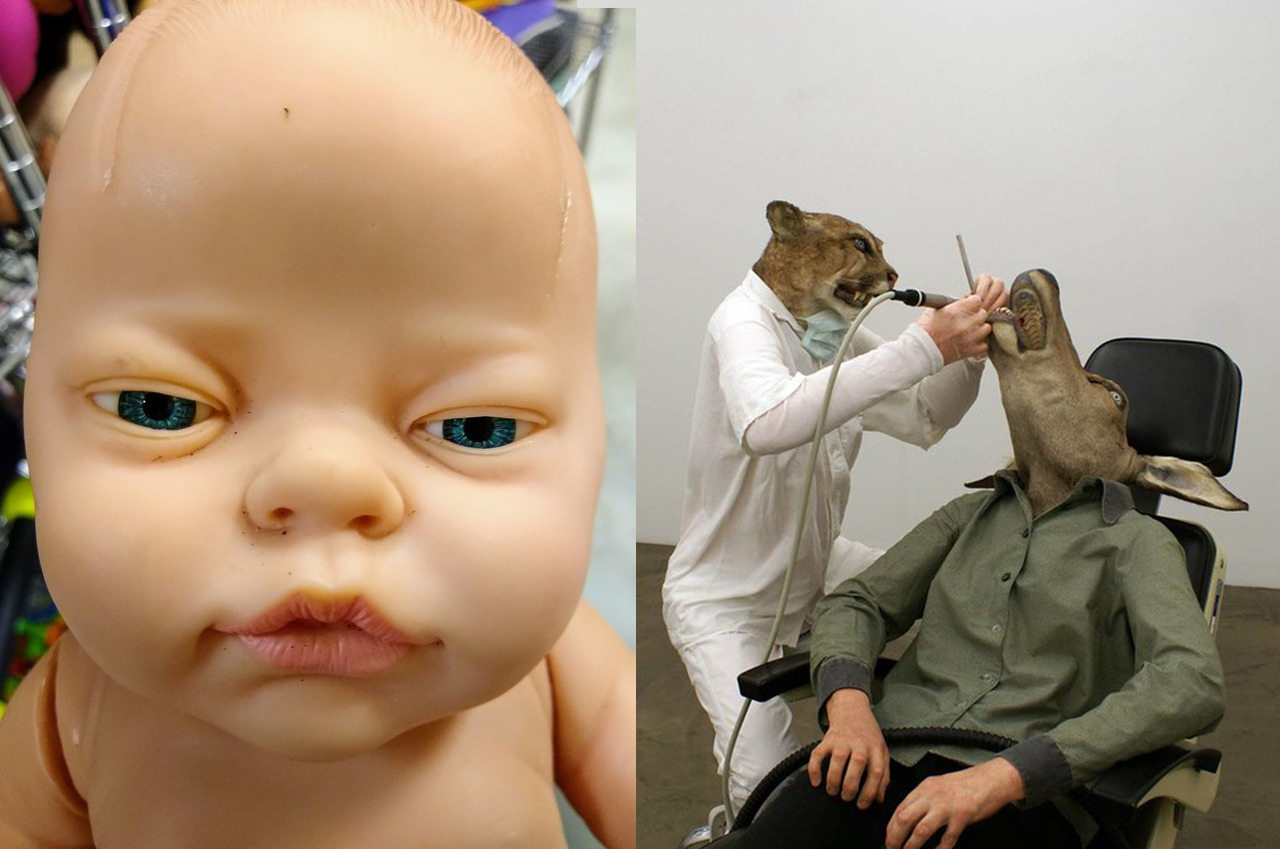
ELISABETTA P. — Permanent Food brings to mind the many magazines born as the offspring of specific art movements, such as the surrealist Minotaure, for example. Does your work bear any specific reference to the avantgardes?
PAOLA M. — Yes, absolutely. The first who did so in Italy were the Futurists. Moreover, in the beginning, we also drew our inspiration from Six Magazine, Rei Kawakubo’s editorial project with its signature image-association style.
Unfortunately, now Tumblr makes it much harder to maintain the structure once offered by the magazine’s double page, especially on smartphones and tablets. However, I can’t separate the two images, otherwise I would betray the original concept. The visual stream of images cannot be enjoyed as well digitally as in the original printed version. So, it is true that that format is reminiscent of early 20th century avantgardes, but it is also very much bound to its printed nature. Maybe at some point the Tumblr version will be over, too. Maybe it’s over altogether. I don’t know.
ANDREA Q. — Are you familiar with Issued by Bottega, the online visual journal through which Bottega Veneta tried to replace their Instagram profile? Although it’s no longer there, it stands out as an interesting attempt at emancipation from social media. What do you think?
PAOLA M. — I see it a little more cynically than that. Yes, they did try, but mainly with the aim to differentiate themselves, just like everyone else. Balenciaga, for example, is another brand that experiments with alternative communication expedients. In my work, I push myself to come up with something new, too. But it’s not easy.
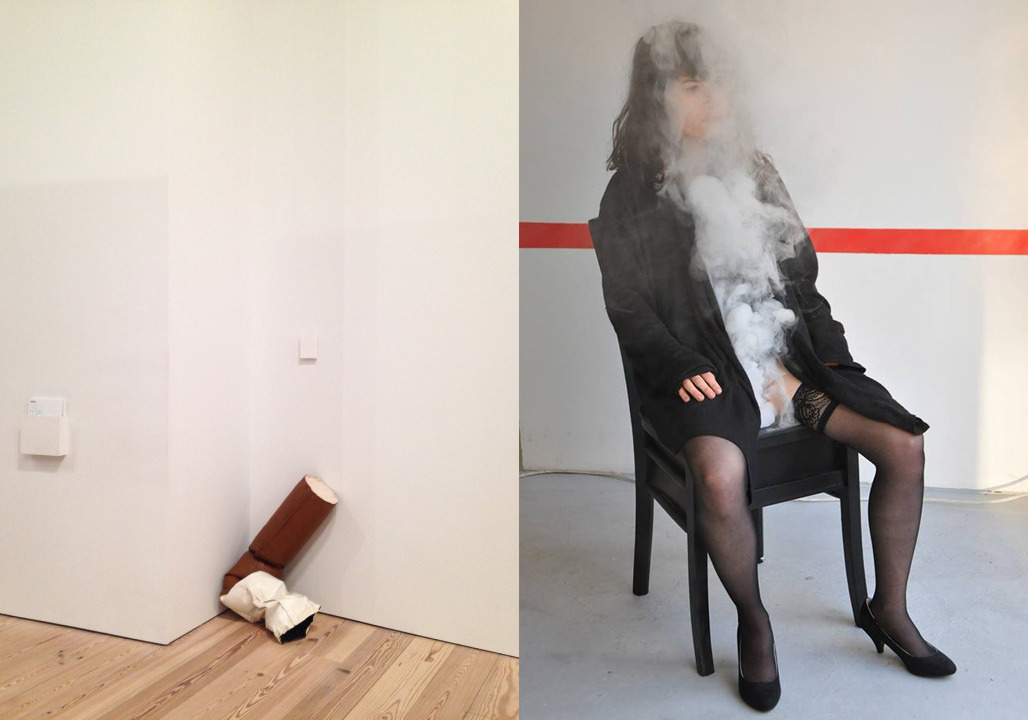
ANDREA Q. — Absolutely. In any case, that somehow reminded us of Permanent Food.
PAOLA M. — Yes, maybe in the way images are put in relation with each other. Permanent Food was really innovative in that respect. Looking at old issues, the degree of innovation in terms of image construction that emerges is unmatched to this day. The same holds true for the digital Tumblr version, and that’s simply because my approach never changed. Updating the page is becoming increasingly difficult, though: my account gets constantly blocked and censored. They won’t let me post even a remotely-sexy picture anymore.
ANDREA Q. — Censorship on social media is definitely too limiting for expressive purposes.
PAOLA M. — Of course, no one wants to be censored. Tumblr used to be a source of inspiration for me, now it’s nearly impossible to find truly interesting content on it, and on the web in general. Nothing compares to Permanent Food’s strength. You know, fashion brands still approach me today asking for my permission to use some of the images we published back then as, apparently, they are a source of inspiration for their designers. I am not able to grant them copyright clearance though, as technically I don’t own it.
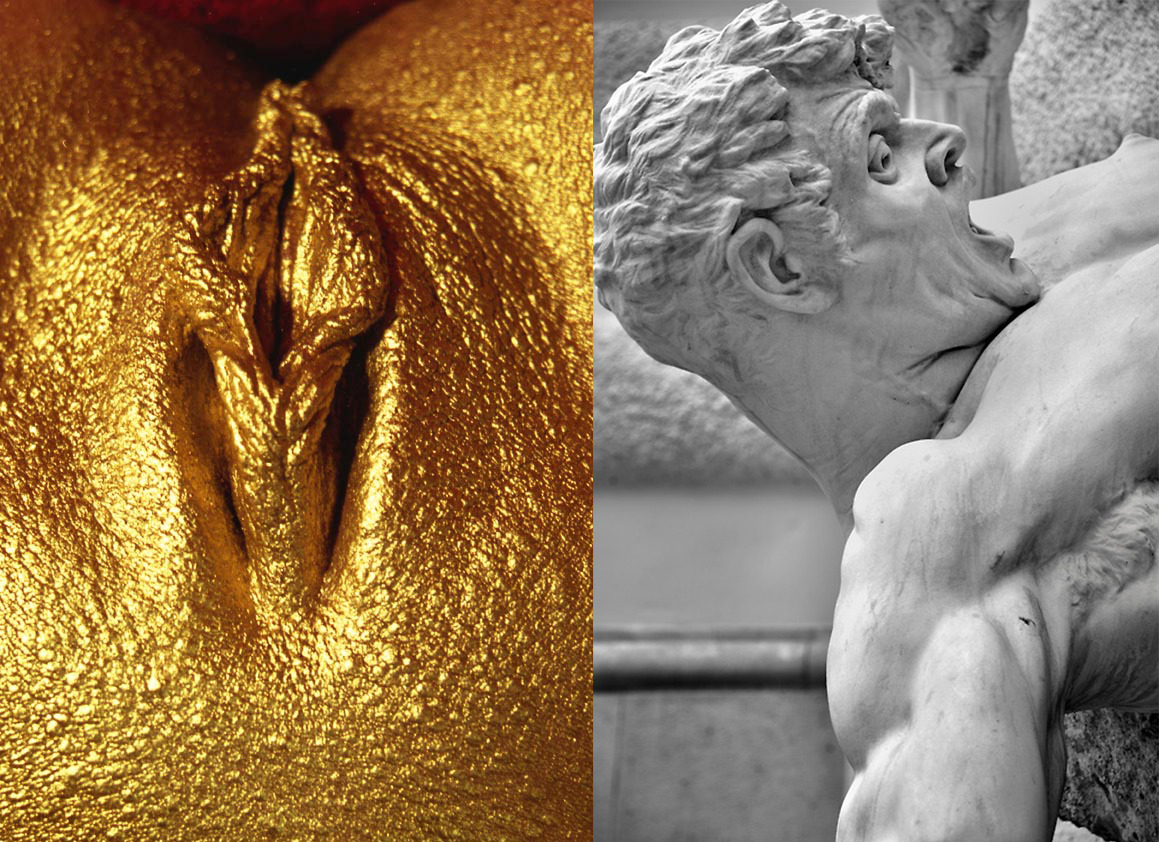
ELISABETTA P. — The definition of Surrealism published in the 1924 Manifesto reads:
‘Psychic automatism in its pure state, by which one proposes to express—verbally, by means of the written word, or in any other manner—the actual functioning of thought. Dictated by thought, in the absence of any control exercised by reason, exempt from any aesthetic or moral concern.’
Permanent Food made us think of the associative practices typical of Surrealism, such as the Exquisite Corpse. What is the logic behind your associations? Are they instinctive? Deliberately provocative? Do they aim to create resonances or rather dissonances?
PAOLA M. — Association is instinctive. That comes from practice, education and so on. I couldn’t do any other job in the world. As I said earlier, I’ve always loved sharing this ‘talent’ of mine, if you will. For example, an advertising campaign takes me no longer than 30 minutes; it is easy for me to interpret dreams and identify where images originate from; and I can appreciate contemporary art. I believe that the ability to enjoy contemporary art is something inborn, it cannot be learned. I could say the same for ancient art, but it’s different, because it tends to be more self-explanatory and often conceived of with a didactic intent.
ANDREA Q. — But even ancient art sometimes loses its didactic function. Piero Della Francesca, for example, has been forgotten over the years for cultural reasons, but has since been rediscovered for his formal qualities. Even those who are unfamiliar with his works can still appreciate their beauty.
PAOLA M. — Yes, absolutely. However, to be truly understood, art also requires specific knowledge of the historical context. But it is not a determining factor: sometimes aesthetics take over.
The primary sources of inspiration during my early years in advertising were Japanese advertising annuals, which I would have sent over to me from Tokyo. I couldn’t have enough of them and, even though I didn’t understand a word, I acknowledged the Japanese’s incredible talent for visual synthesis. To me, it was pure inspiration. There are some stunning videos in Japan: I’ve seen men dancing with huge compasses to advertise painkillers… things that we would never think of. Or rather, I’ve never got to that point, but the Exquisite Corpse did. The difference between me and the avantgardes is that they made art – something I don’t do, but that Maurizio Cattelan does. Artists create from nothing, I don’t. I can’t create an image from scratch.
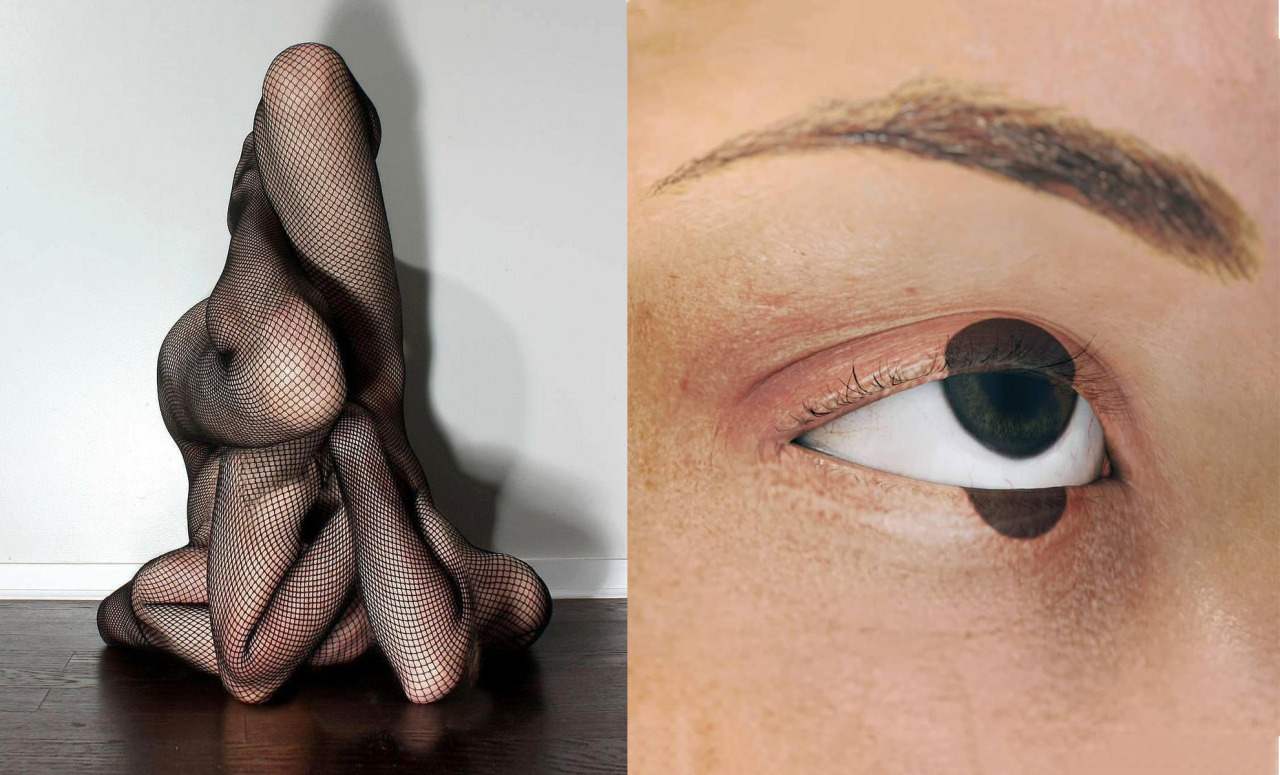
ELISABETTA P. — The Italian television author Enrico Ghezzi has allegedly defined Permanent Food as the printed version of the TV program Blob. How did you feel about that?
PAOLA M. — We frankly found it a belittling statement, even though, in a way, he was right. After all, Blob was based on the same idea, just using the TV broadcast of the day before instead of magazines. The substantial difference, however, is that Enrico Ghezzi is not an artist: legitimation in a concept of any kind is crucial. Ghezzi is a good television author, and if Blob had been the work of an artist, it would have been different, but done by him, it doesn’t take on the status of a work of art: it’s just a clever editorial idea. It is as if I had made Permanent Food on my own. A nice idea, nothing else. But as soon as an artist legitimises it, a simple idea becomes something bigger, more powerful, deeper… in short, it becomes art.
ELISABETTA P. — That is also the case of Toilet Paper magazine and the collaboration between Maurizio Cattelan and the photographer Pierpaolo Ferrari. The magazine’s website also features your name: are we to expect any new collaborations between Permanent Food and Toilet Paper?
PAOLA M. — That between Maurizio and Pierpaolo is an extraordinary creative liaison. Maurizio has always been good at surrounding himself with people who complete him: it happened with me, with Massimiliano Gioni, with Francesco Bonami. Lucio Zotti is also an important right-hand man of his – he has been curating the technical aspects of many of his works. Maurizio, Pierpaolo and I are part of the same network, we are always together. Toilet Paper’s website now serves as a platform for the sale of Permanent Food, but other than that, I don’t have any ongoing projects with them.
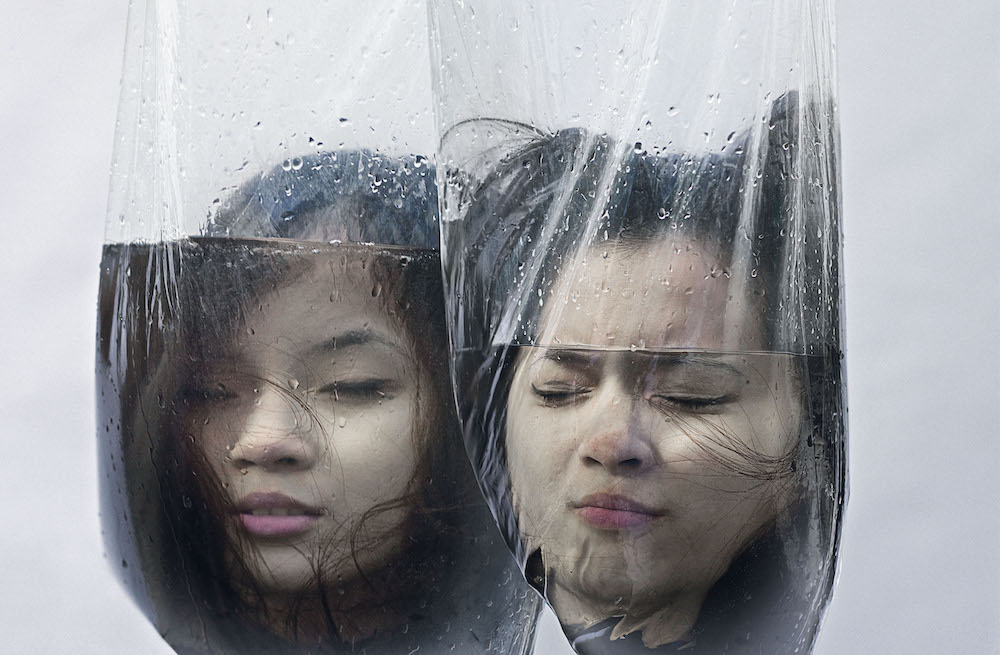
ANDREA Q. — What do you think of Toilet Paper?
PAOLA M. — Toilet Paper is now a brand that Maurizio and Pierpaolo export and apply in the most diverse fields – from fashion to design. It was born as a magazine but, over time, its visual language has become so recognisable and distinctive that it has turned, indeed, into a brand. Perseverance proved to be their strength, especially on the part of Pierpaolo who, together with a team of talented people, is the driving force behind the project.
ANDREA Q. — It is indeed interesting to understand the function of everyone Cattelan surrounds himself with. How is the concept of authorship redefined in light of this?
PAOLA M. — The working group is part of the work of art: it is an alchemy of several different minds. As history teaches us, sometimes, the dismemberment of a group has led to the end of entire artistic currents.
ELISABETTA P. — But let’s come to your very own editorial project: Interview Match. A ring in which artists and prominent contemporary minds face each other armed solely with images. Can you tell us about it?
PAOLA M. — Interview Match is the natural evolution of Permanent Food. Simply put, I needed to find a use for the myriad images in my archive. Sending and receiving images as questions and answers is something I’ve always done, even before it became the norm. Based on that idea, I invented this interview format and turned it into an editorial project with a curatorial approach. I’m not a curator, but selecting the right participants was crucial to the project. However, this project is over, too now. Nowadays, anyone can send images or emoji back and forth on WhatsApp.
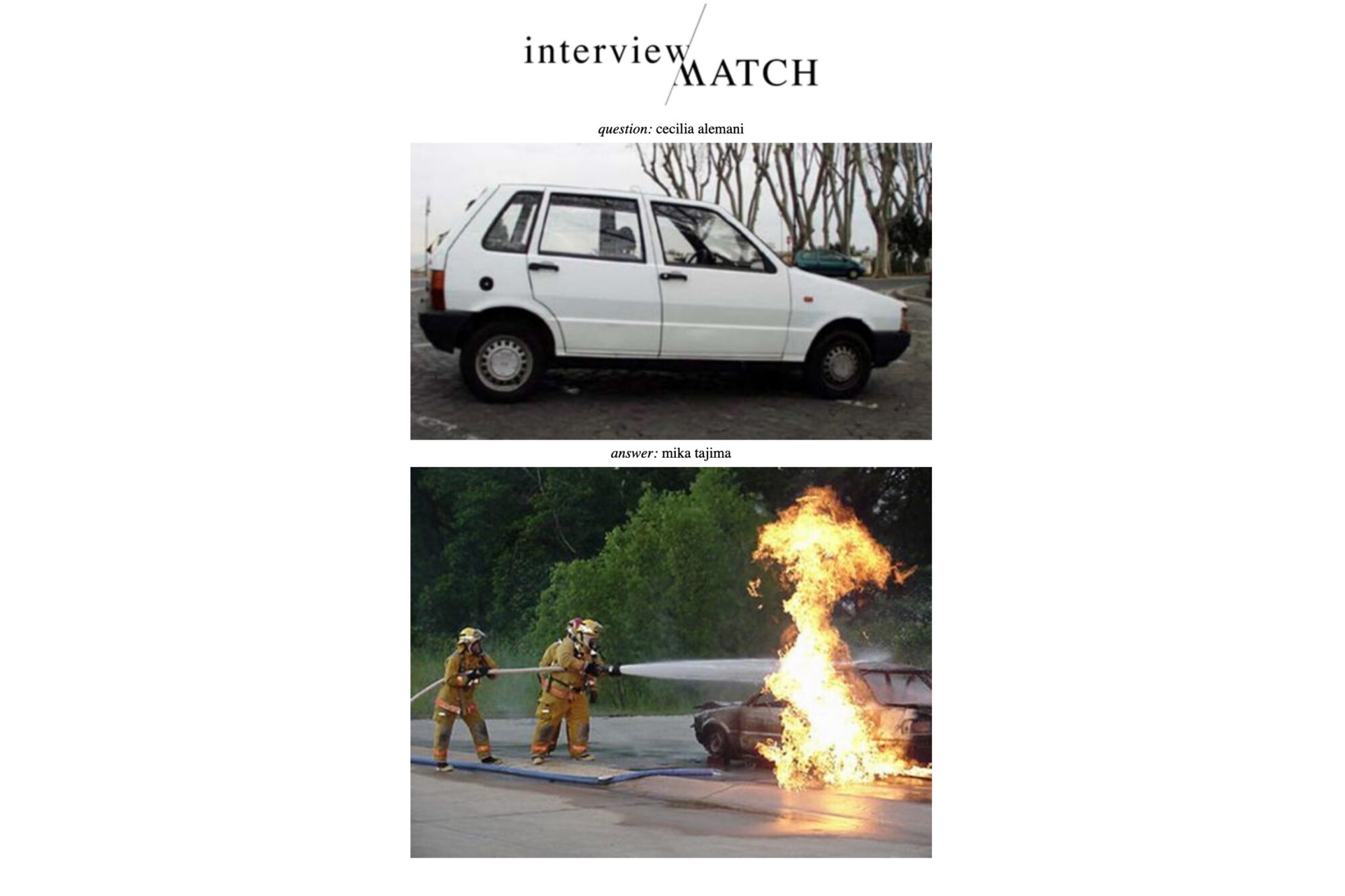
ELISABETTA P. — One of the ‘matches’ features Cecilia Alemani, curator of the latest Venice Biennale. What do you think about her work and her impact on the art world?
PAOLA M. — I like her very much. I’m personally acquainted with both her and Massimiliano Gioni, so I’ve had the chance to see them work together, and I must say that Cecilia has an extraordinary vision: she does a lot of research and manages to discover really unique artists. She directed the High Line’s art program in New York, curated the Italian pavilion at the 2017 Venice Biennale, as well as other very important exhibitions and, of course, last year’s Biennale. I have been fortunate enough to participate in creative meetings with Maurizio, Massimiliano and Cecilia, and I must say that she’s a sublime curator. I really respect her and I like the fact that her Biennale was a women-only exhibition – a fact that may stir criticism but, after all, art used to be a men’s prerogative and no one felt the need to justify themselves.
ELISABETTA P. — Are there any new projects in the pipeline?
PAOLA M. — I would like to hang myself in the bathroom, as Maurizio’s latest work.
instagram.com/paolamanfrina
permanentfood.tumblr.com
interviewmatch.it
March 2023